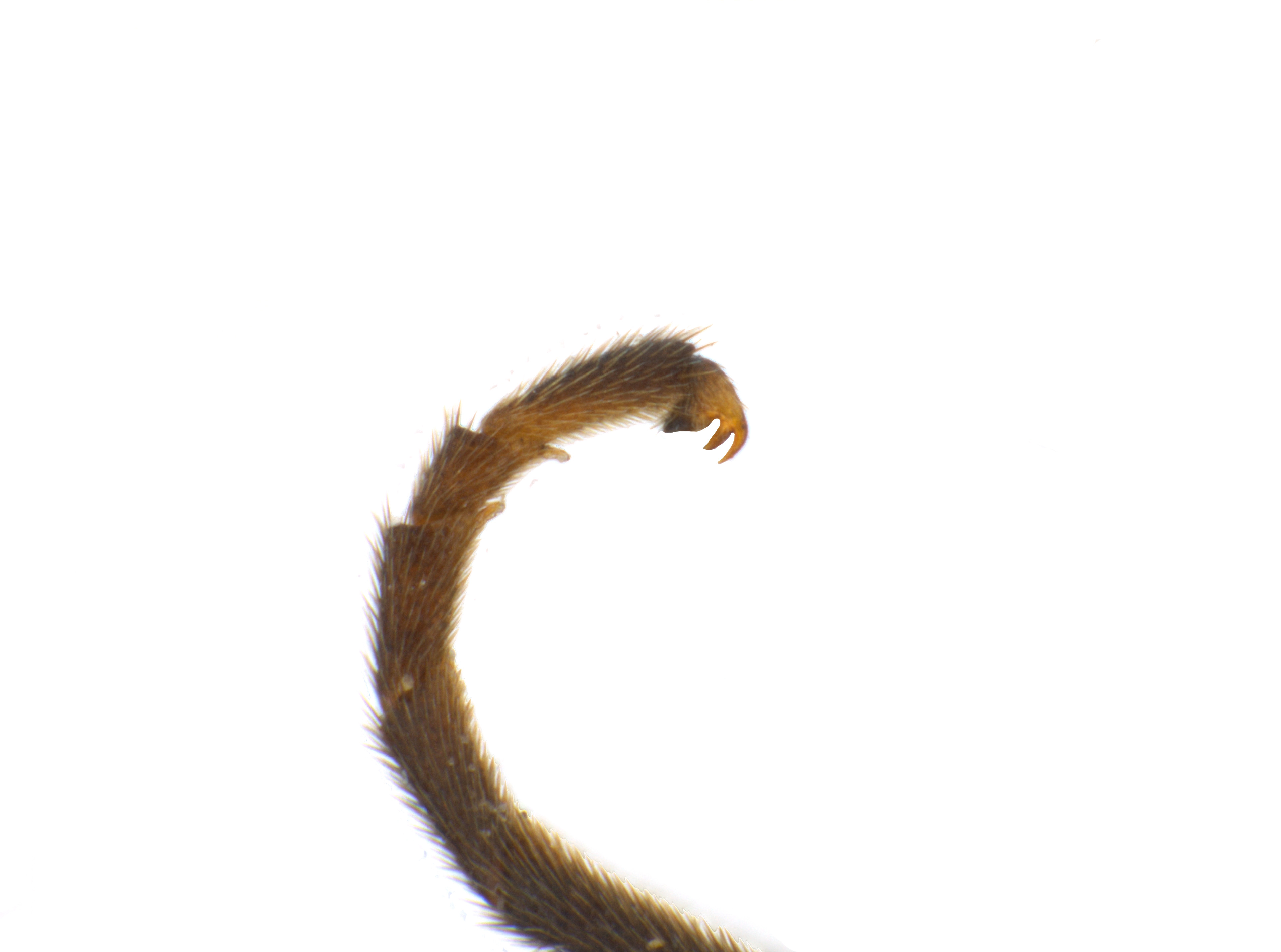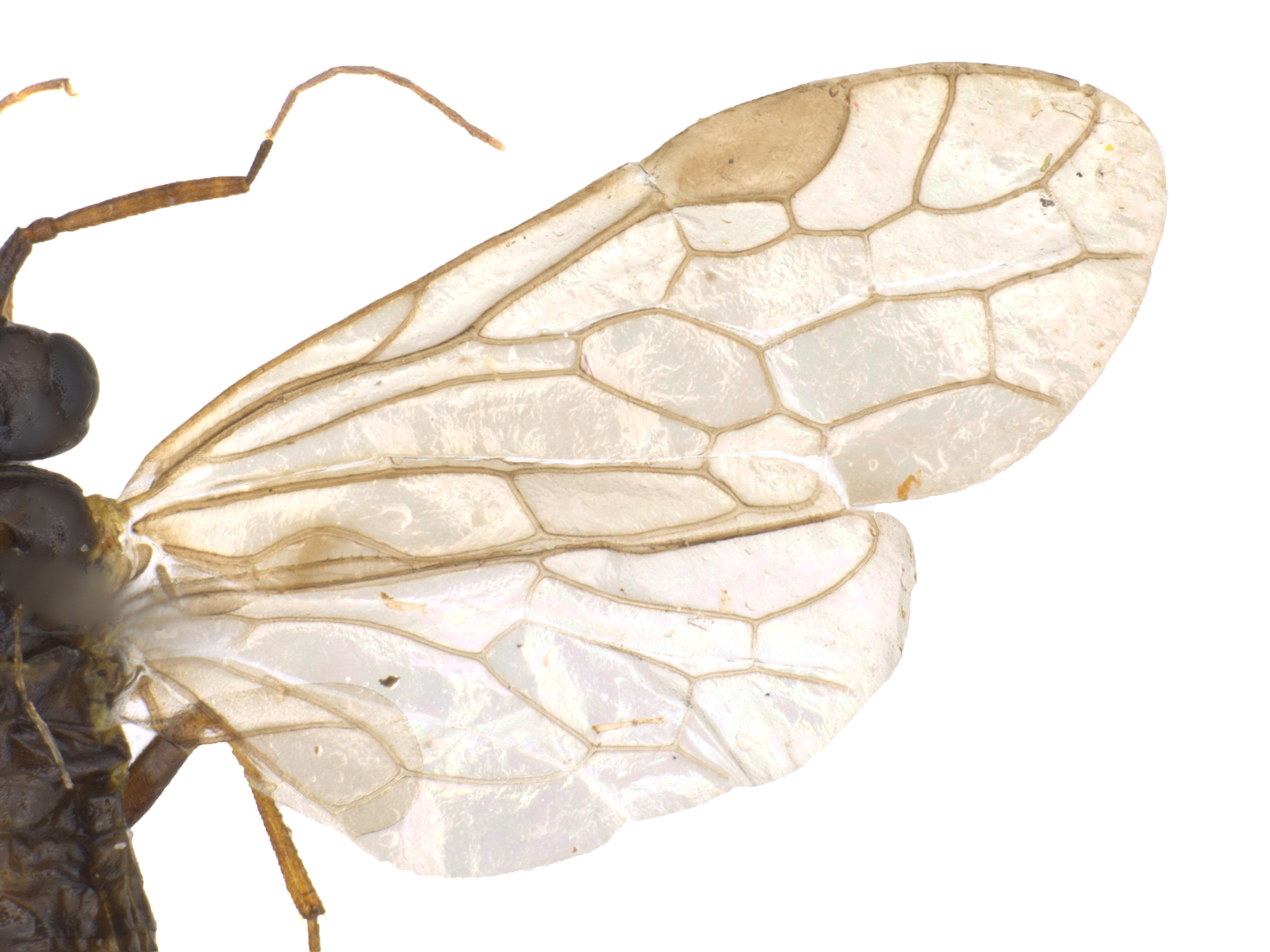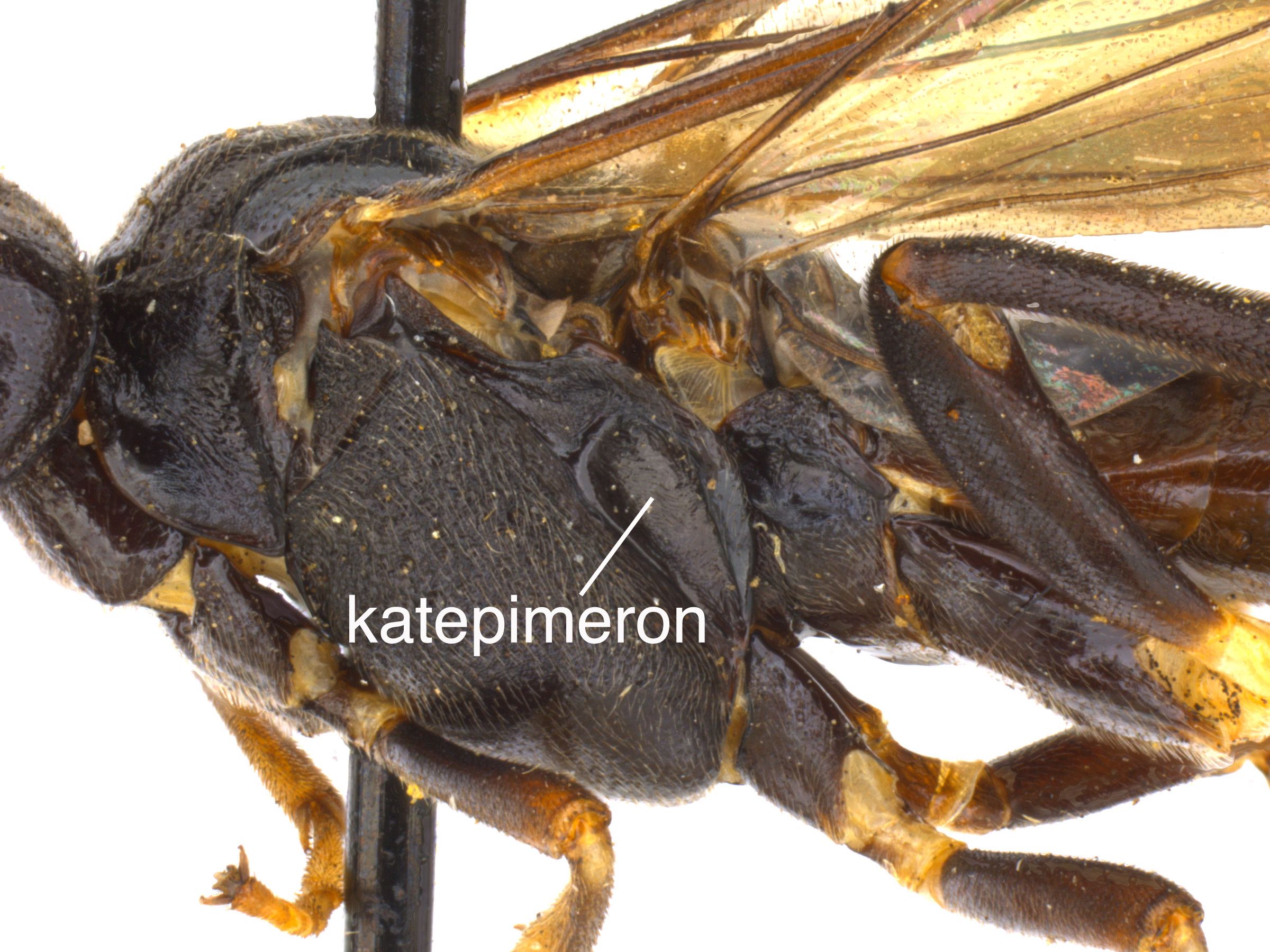Family: Tenthredinidae
Family common name: common sawflies
Subfamily: Blennocampinae
Tribe: Phymatocerini
Genus: Monophadnus Hartig, 1837
Subgenera: none
The Tenthredinidae are the most species-rich family and are found throughout the world, in all continents but Antarctica. They are known as the “common sawflies.” They can generally be recognized by a cylindrical body and long, segmented antennaeantenna:
the sensory organ emerging from the front of the head, usually between the compound eyes and above the clypeus; includes the flagellum, scape and pedicel
 . Otherwise, they come in a variety of colors, sizes, and forms (Goulet 1992Goulet 1992:
. Otherwise, they come in a variety of colors, sizes, and forms (Goulet 1992Goulet 1992:
Goulet H. 1992. The genera and subgenera of the sawflies of Canada and Alaska: Hymenoptera. Symphyta. The insects and arachnids of Canada. Part 20. Agriculture Canada Publication.).
Sawflies in the subfamily Blennocampinae have a diverse set of life histories and habits. Many species are restricted to subtropical and tropical regions, but the genus is still fairly species-rich in North America. Blennocampinae includes many sawflies that feed on ornamental and forestry crops. This subfamily can be recognized by wing venationvenation:
the network of veins on a wing
and bidentatebidentate:
having two teeth; often used in descrbing mandibles or tarsal claws
 mandibles (Smith 1969dSmith 1969d:
mandibles (Smith 1969dSmith 1969d:
Smith DR. 1969d. Nearctic Sawflies. I. Blennocampinae: Adults and larvae (Hymenoptera: Tenthredinidae). Technical Bulletin, U.S. Department of Agriculture 1397: 1-176.).
Monophadnus are medium-sized, about 6.5–7.5 mm in length, and are mostly black with markings of white or red and with short, stocky antennaeantenna:
the sensory organ emerging from the front of the head, usually between the compound eyes and above the clypeus; includes the flagellum, scape and pedicel
 (Smith 1969dSmith 1969d:
(Smith 1969dSmith 1969d:
Smith DR. 1969d. Nearctic Sawflies. I. Blennocampinae: Adults and larvae (Hymenoptera: Tenthredinidae). Technical Bulletin, U.S. Department of Agriculture 1397: 1-176.).
There are 25 described extantextant:
in existence; opposite of extinct
species worldwide. Seven species occur in North America (Taeger et al. 2018Taeger et al. 2018:
Taeger A, Liston AD, Prous M, Groll EK, Gehroldt T, and Blank SM. 2018. ECatSymmdash;Electronic World Catalog of Symphyta (Insecta, Hymenoptera). Program version 5.0 (19 Dec 2018), data version 40 (23 Sep 2018). Senckenberg Deutsches Entomologisches Institut (SDEI), Muuml;ncheberg. https://sdei.de/ecatsym/ Accessed: 28 Jan 2020.).
Subfamily characters
 veins Cu1 and 1m-cu between 120°–150° (Goulet 1992Goulet 1992:
veins Cu1 and 1m-cu between 120°–150° (Goulet 1992Goulet 1992: veins M and 1m-cu parallel (Smith 1969dSmith 1969d:
veins M and 1m-cu parallel (Smith 1969dSmith 1969d: veins 2A and 3A incomplete (Smith 1969dSmith 1969d:
veins 2A and 3A incomplete (Smith 1969dSmith 1969d:Genus characters
 (Goulet 1992Goulet 1992:
(Goulet 1992Goulet 1992: veins 2A and 3A straight (Goulet 1992Goulet 1992:
veins 2A and 3A straight (Goulet 1992Goulet 1992: cellcell:
cellcell: M present (Smith 1969dSmith 1969d:
M present (Smith 1969dSmith 1969d: split into anterioranterior:
split into anterioranterior: basalbasal:
basalbasal:Monophadnus can be confused with similar species in the subfamily Blennocampinae. It can be distinguished from most other genera by the fourth antennal segment, which is longer than the third, and the straight apexapex:
the end or most distal area of any structure
to fore wingfore wing:
the anterior wing of each pair of wings; usually the largest wing of the pair
 veins 2A and 3A; and from Monophadnoides by the lack of the tarsal clawtarsal claw:
veins 2A and 3A; and from Monophadnoides by the lack of the tarsal clawtarsal claw:
sharpened appendage emerging from the apex of the tarsus
 basalbasal:
basalbasal:
towards the base; closest to the body
lobe and the presence of hind winghind wing:
the posterior wing of each pair of wings
 cellcell:
cellcell:
1. a membranous area of the wing between veins, 2. a small cavity or closed space
 M (Smith 1969dSmith 1969d:
M (Smith 1969dSmith 1969d:
Smith DR. 1969d. Nearctic Sawflies. I. Blennocampinae: Adults and larvae (Hymenoptera: Tenthredinidae). Technical Bulletin, U.S. Department of Agriculture 1397: 1-176., Goulet 1992Goulet 1992:
Goulet H. 1992. The genera and subgenera of the sawflies of Canada and Alaska: Hymenoptera. Symphyta. The insects and arachnids of Canada. Part 20. Agriculture Canada Publication.).
none
In North America, Monophadnus feeds on species of Ranunculus (buttercup) (Goulet 1992Goulet 1992:
Goulet H. 1992. The genera and subgenera of the sawflies of Canada and Alaska: Hymenoptera. Symphyta. The insects and arachnids of Canada. Part 20. Agriculture Canada Publication.).
The specific biology of Monophadnus in North America is unknown.
Monophadnus monticola in Europe is recorded sequestering toxic compounds from the host plant. When threatened, the larvaelarva:
the immature stage of holometabolous insects
 exude hemolymphhemolymph:
exude hemolymphhemolymph:
the "blood" of an insect, a fluid plasma containing nucleated cells
containing the toxins as a defense against predators. This habit may be present in some North American species as well (Boevé and Müller 2005, Prieto et al. 2007Prieto et al. 2007:
Prieto JM, Schaffner U, and Barker A. 2007. Sequestration of furostanol saponins by Monophadnus sawfly larvae. Journal of Chemical Ecology 33: 513-524. https://doi.org/10.1007/s10886-006-9232-7).
World: This genus is known from North America, South America, Europe, India, Indonesia, Laos, Japan, China, and Korea (Taeger et al. 2018Taeger et al. 2018:
Taeger A, Liston AD, Prous M, Groll EK, Gehroldt T, and Blank SM. 2018. ECatSymmdash;Electronic World Catalog of Symphyta (Insecta, Hymenoptera). Program version 5.0 (19 Dec 2018), data version 40 (23 Sep 2018). Senckenberg Deutsches Entomologisches Institut (SDEI), Muuml;ncheberg. https://sdei.de/ecatsym/ Accessed: 28 Jan 2020.).
North America: Monophadnus occurs throughout the northern United States and southern Canada, and farther south into California in the west (Smith 1969dSmith 1969d:
Smith DR. 1969d. Nearctic Sawflies. I. Blennocampinae: Adults and larvae (Hymenoptera: Tenthredinidae). Technical Bulletin, U.S. Department of Agriculture 1397: 1-176.).
Map data from: GBIF.org (29 October 2019) GBIF Occurrence Download Monophadnus
Details about data used for maps can be found here.